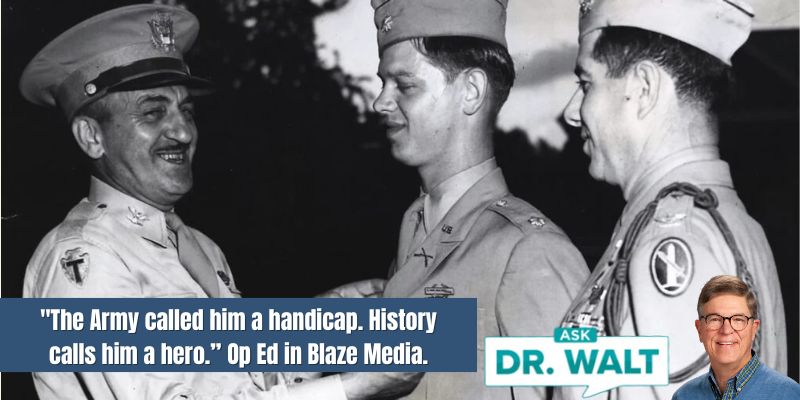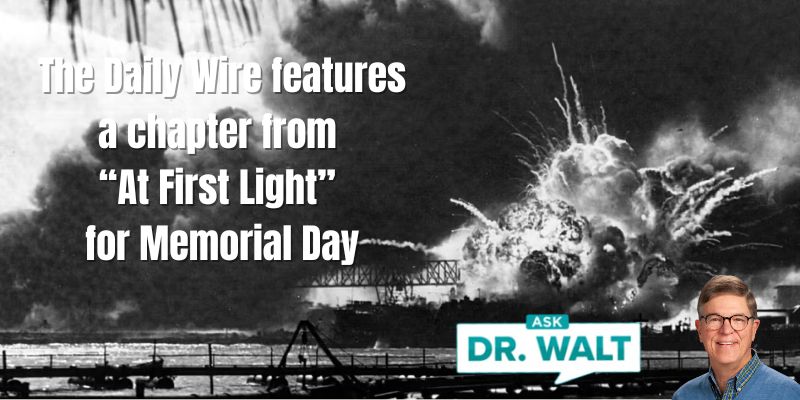
August 25, 1944 – Dad takes a break from chasing German soldiers to write an optimistic letter home
August 25, 2024
August 27, 1944 – Dad and his best friend create a life-long memory fighting together as one
August 27, 2024The surprised, shaken and disorganized German 19th Army, feeling the weight of our advance, harassed from all sides, and recognizing the precariousness of its position, tried to break contact and salvage itself by withdrawal of the valley of the Rhone; but at Montelimar it suddenly and unexpectedly found its escape route blocked by the elements of the 36th Division and Task Force Butler that had raced up the valleys of the Durance and the Drome Rivers to intercept it.[1]

Under pressure of the 3rd Infantry Division on the south, a great portion of the retreating army was forced into the Montelimar pocket between the river and the heights occupied by the 36th Division which dominated it.
Fierce fighting followed as the traffic Germans fought for their very existence.
In the bloody battle that ensued great numbers of the enemy were annihilated, enormous quantities of supplies and equipment were captured or destroyed, and thousands of prisoners of war were taken.
Those elements of the great German 19th Army that succeeded in making their escape continued frantic efforts to extricate themselves through flight to the North but the valley of the Rhone was opened to the allies.
Sensing quickly the changing situation and seizing the opportunity offered, the VI Corps regrouped, re-oriented itself towards the northeast, entered a new phase and took up the pursuit of the fleeting Germans.[1]
~~~~~
We rode tanks and trucks up to within ten miles of Montelimar. The Thirtieth Infantry was on our right, and unfortunately, our own planes bombed them and killed about thirty of our boys. The infantry gave the proper signal, which was yellow smoke, but they bombed anyway. The only reason we could come up with was that we were about twenty miles ahead of schedule.
Along the way, we came across one of the very few houses in the area. It was built around 1675 and had a stone wall fence around it, which we used to take cover. After several small skirmishes, the Fifteenth Infantry came along to relieve us, but before we could pull out, we got word that the Thirty-Sixth had a battalion trapped, and we were to contact them to see how we could help.
The battalion, which had made its way to the edge of Montelimar, suddenly found themselves surrounded by a German convoy. Because we had pushed the Germans north at such a rapid pace, they arrived a little too early for our boys. A German tiger tank had knocked out four of our tanks, three TDs, and an antitank crew and jeep before they were able to set the tiger on fire.
Once we arrived, we had a field day—we shot 1,100 rounds of 60 mm ammunition in two hours. We had to stop because the barrels got red hot.
The runners had to carry 1,100 rounds up the hill to be fired, and this was no easy task. It took us forty-five minutes to get artillery support and about an hour before we could see our planes coming to the rescue.
As the fight raged on, we soon learned that it was the Nineteenth German Army that we had trapped, which would turn out to be a major battle for our side. After six hours of intense fighting, we ended up with around 1,000 prisoners, shot up between 1,000 to 1,500 vehicles, confiscated five large railroad guns, and left about 1,000 dead horses.
We stayed in a two-story home for several days rounding up the German prisoners and about thirty-three Russian force fighters. The Russians had been forced to fight with the Germans, but they couldn’t speak any German or Italian, Polish, or English, so nobody could understand them.
The Germans were taking back everything they could to Germany, so several of our guys got lucky, finding a swastika flag, a bolt of silk goods, and a traveling alarm clock, which had been taken from the French.
We walked through part of the ten-mile convoy that had been destroyed, and here we saw dozens of Volkswagens, all stacked on top of each other from one side of the street to the other. Apparently, they were trying to retreat, and as we kept bombing, cars were hit, and they were unable to get through.
We also passed several of the dead horses and, to our surprise, came upon a dead female nurse. This was the one and only woman I ever saw killed during the war.[2]
~~~~~
On about August 26, I was out in front of the column looking for a place to put our anti-tank guns our whole column was stopped on the road.
I looked up and saw about ten P47s at 10,000 feet and thought nothing of it until I heard them starting to peel off and dive on a target I looked again and saw that the target was our column on the road.
They certainly scared the hell out of me. I was in a deep cut in the road. I ran up a 12-foot bank and was out across a field about 100 yards before the first bomb hit.
Fortunately only three of the planes dropped their bombs and strafed the column but they knocked out three trucks.
A few men were wounded but nobody was killed and again I had my adrenaline fix for the day.[3]
~~~~~
[1] Escape up Rhone Valley Smashed at Montelimar. Beachhead News. Souvenir Edition. Vol.1, No. 100. Sunday, October 15, 1944. Page 3.
[2] Hartstern, 52-53.
[9] Staff Sergeant Charles O. Beardslee. Dogface Soldiers Memoirs. Southern France: August 15, 1944.
In case you haven’t read or listened to Dad’s book, you can learn more or order it here.
© Copyright WLL, INC. 2024.




